The JWW2-2 Site yielded tens of thousands of pieces of material culture, most of which were stone tools and flakes (i.e., debris from making stone tools), pottery, and animal bones. The stone tools consisted of spear and dart points as well as arrowheads (collectively referred to as projectile points), drills, scrapers, and utilized flakes. Utilized flakes are unmodified pieces of debris that had useful sharp edges but were discarded when the task at hand was complete. Microscopic analysis showed that these “disposable tools” were used for butchering meat and shaping/modifying hard materials like wood and bone. Microscopic analysis also showed that the site’s drills were used as perforators for leather and hide working. An unusually large number of drill fragments was recovered from the site.
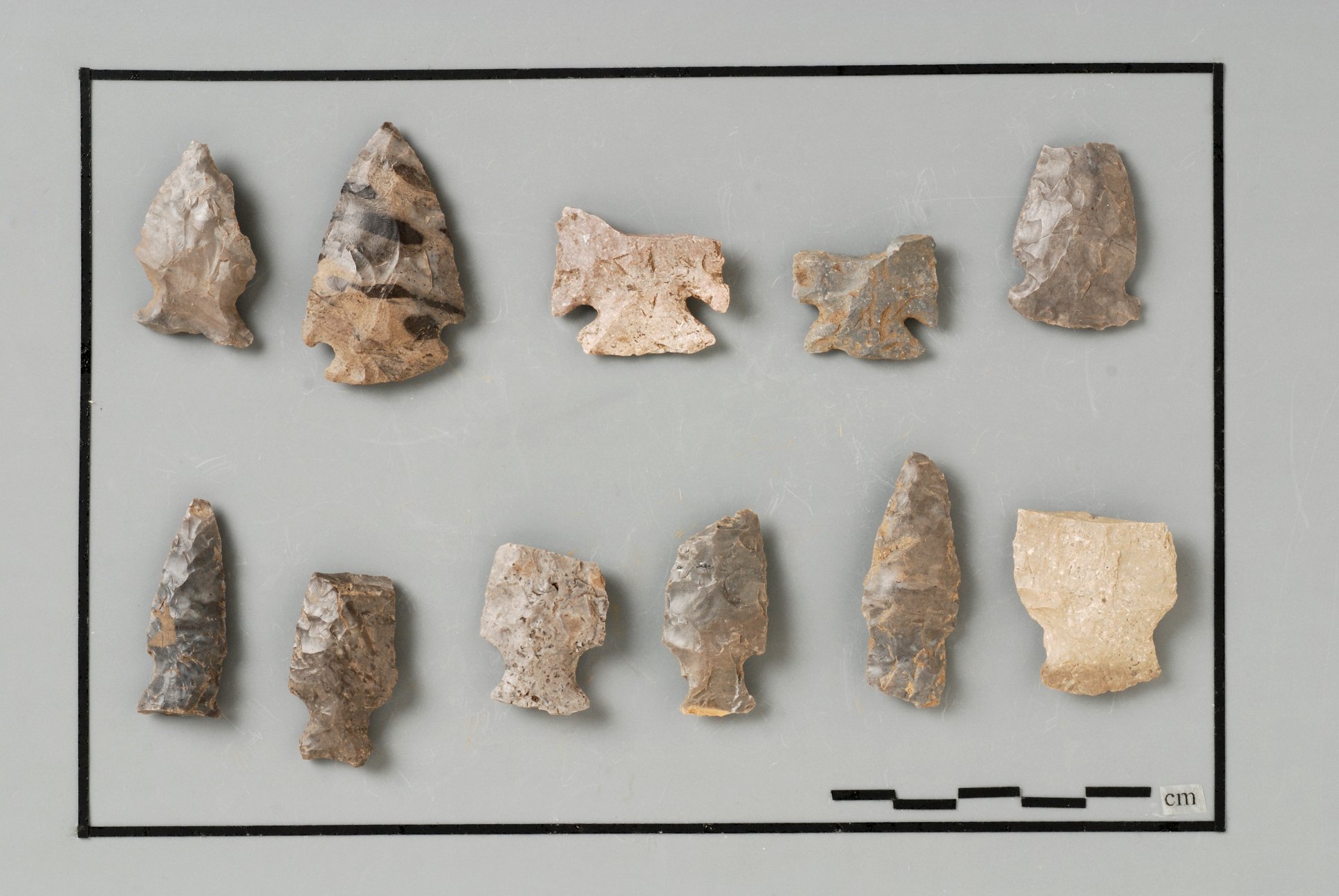
Projectile points from the Late Archaic Period.
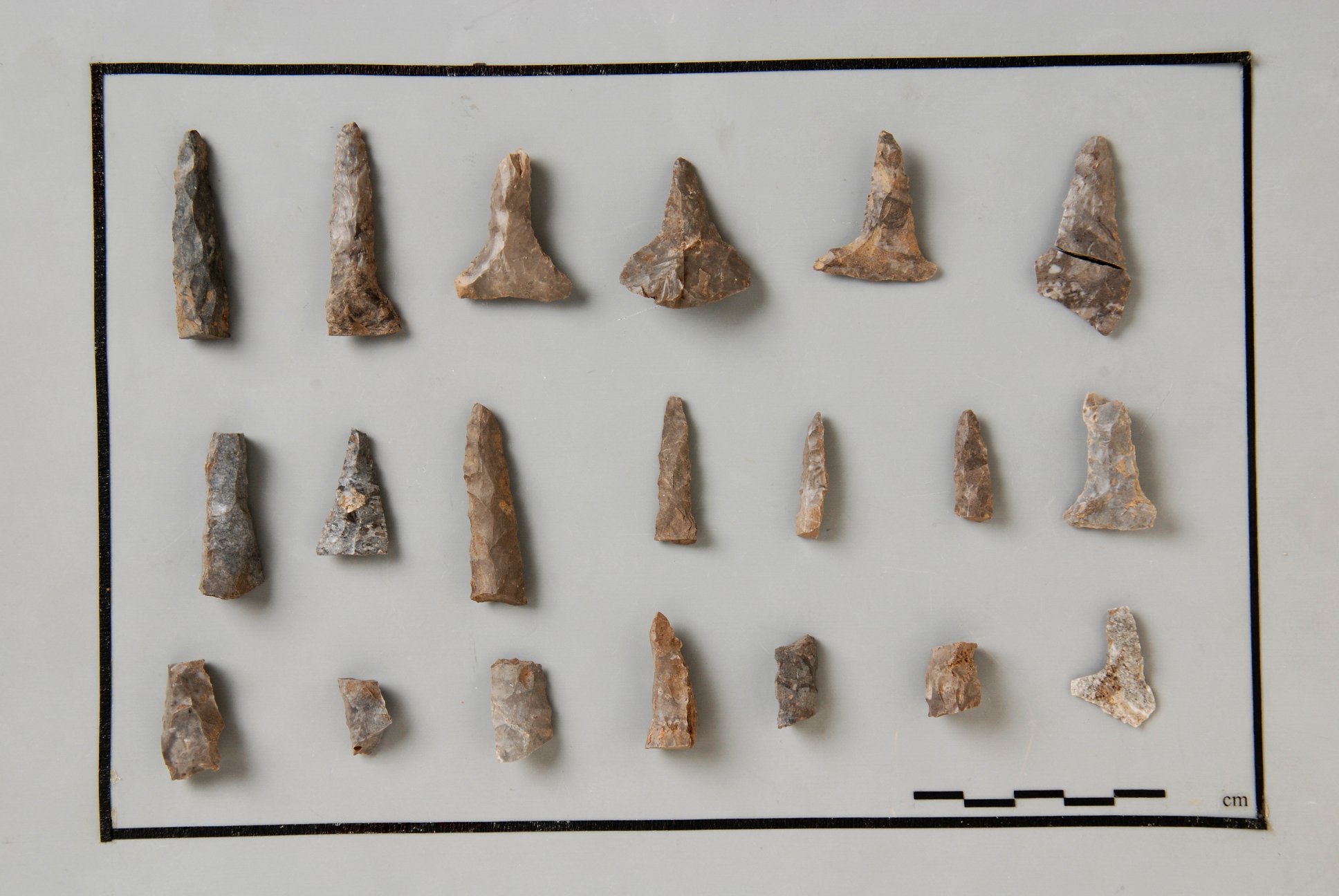
Stone drill fragments used for leather working.
There were many kilograms of pottery recovered from the site, most of which was found within features. The recovered pottery sherds were almost all from vessel types associated with the early Late Woodland Period, including Carpenter Brook Cord-on-Cord, Sackett Corded, Levanna Corded Collar, Owasco Corded Horizontal, and an unidentified incised type.
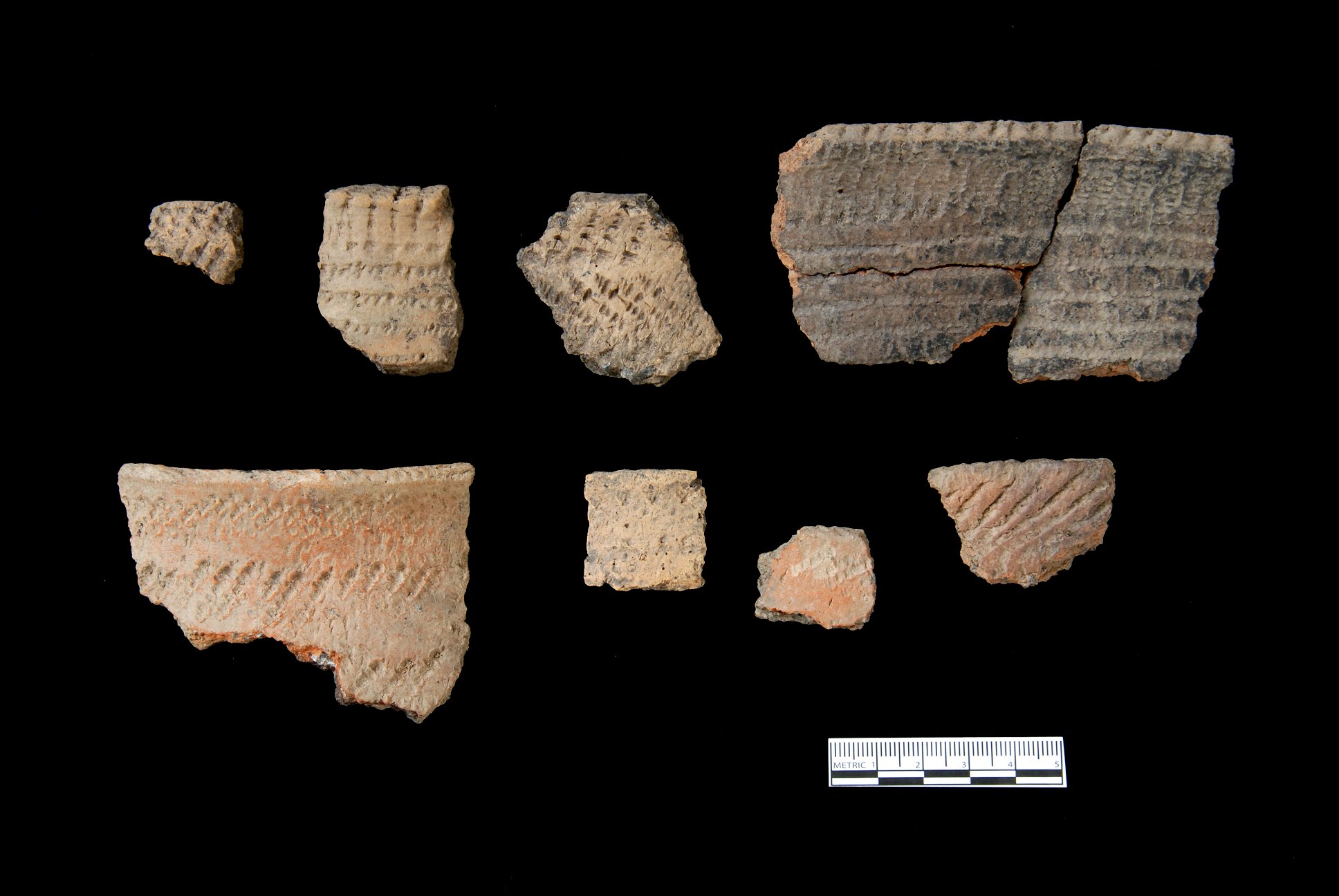
Pottery types from the Early Late Woodland Period.
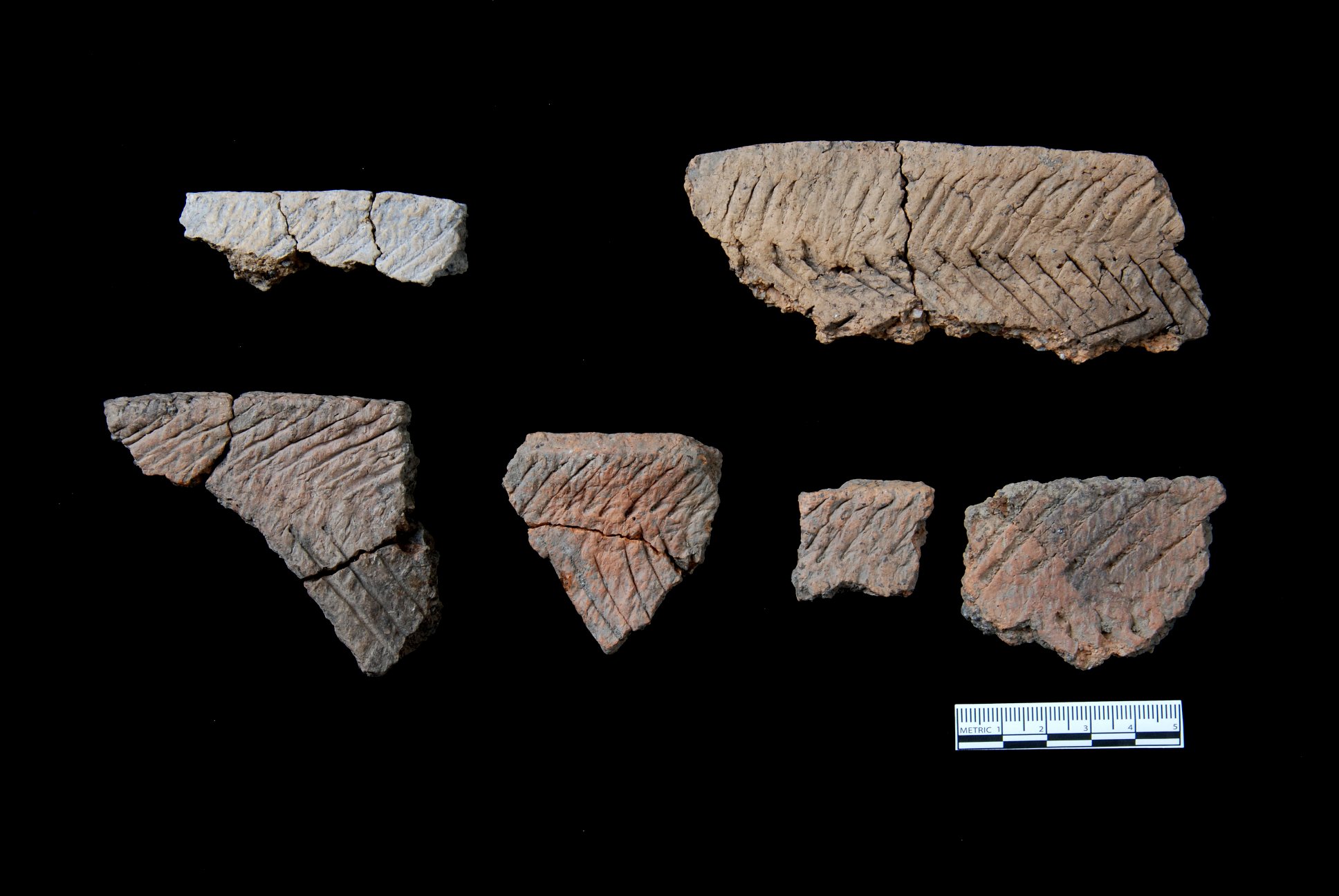
Incised pottery.
Groundstone and roughstone material culture was recovered in small numbers. These consisted of hammerstones, pitted stones, a pestle, and an anvil. Some of these artifacts would have been used for processing nuts and other vegetation. The botanical evidence suggested that the site was used in the autumn based on the presence of nutshells and corn but not seeds from summer plants like raspberries. The animal bone assemblage also indicated habitation in the late autumn or winter, with deer as the most identified species. Despite the river being so close to the site, there were few net weights or fish bones recovered.
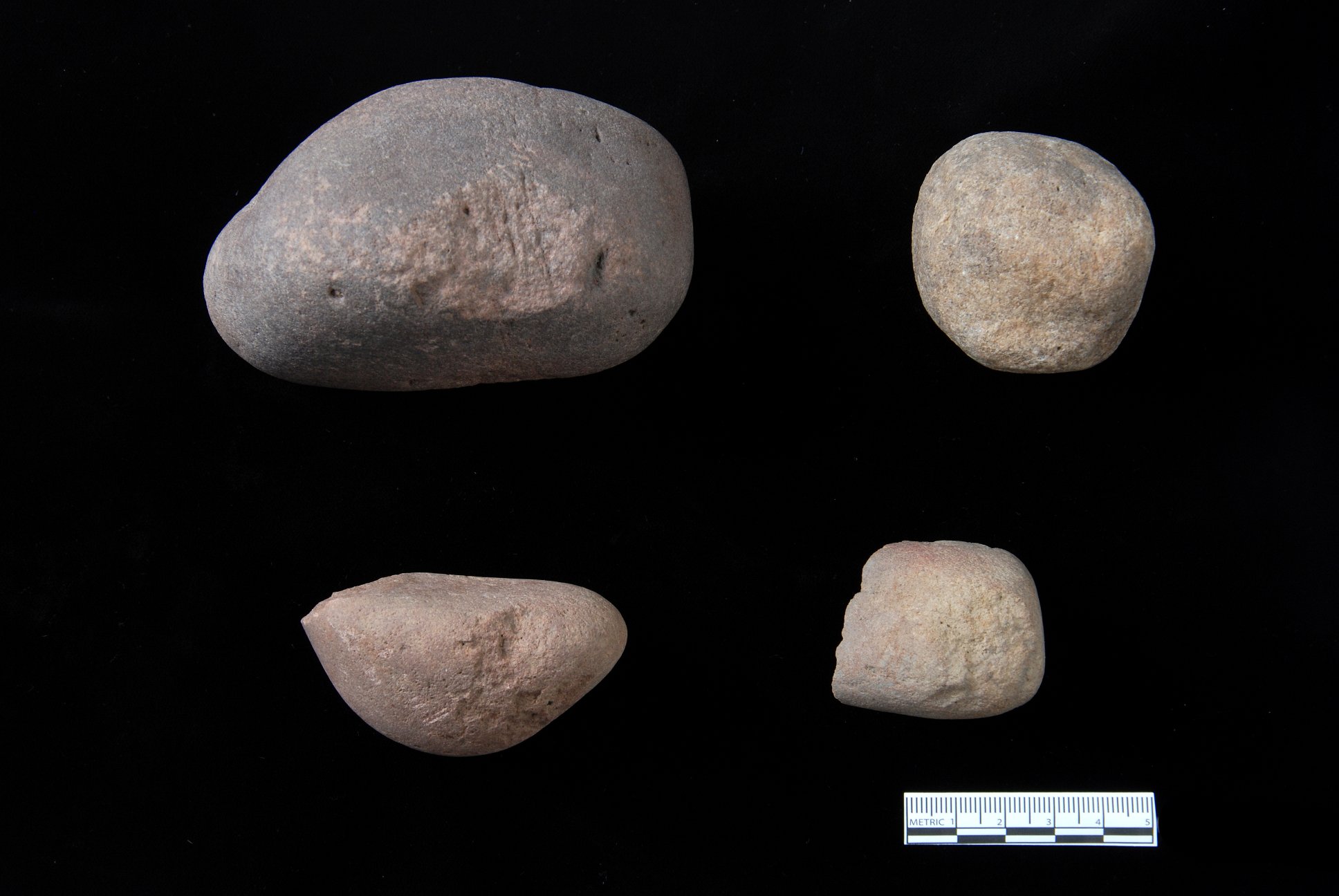
Hammerstones.
Archaeologists recovered glass trade beads and scraps of brass, two of which had been shaped into ornaments. The beads were consistent with late 18th century types, which coincides with the historically documented Indigenous villages at Ohagi (Tuscarora Nation) and Big Tree (Seneca Nation). Other historic artifacts that may have been used by Indigenous people include three mouth harps, an English gun flint and a lead flint wrap, and a lead seal from a bolt of cloth. These items were used by European Americans, but were also commonly traded to Indigenous groups.
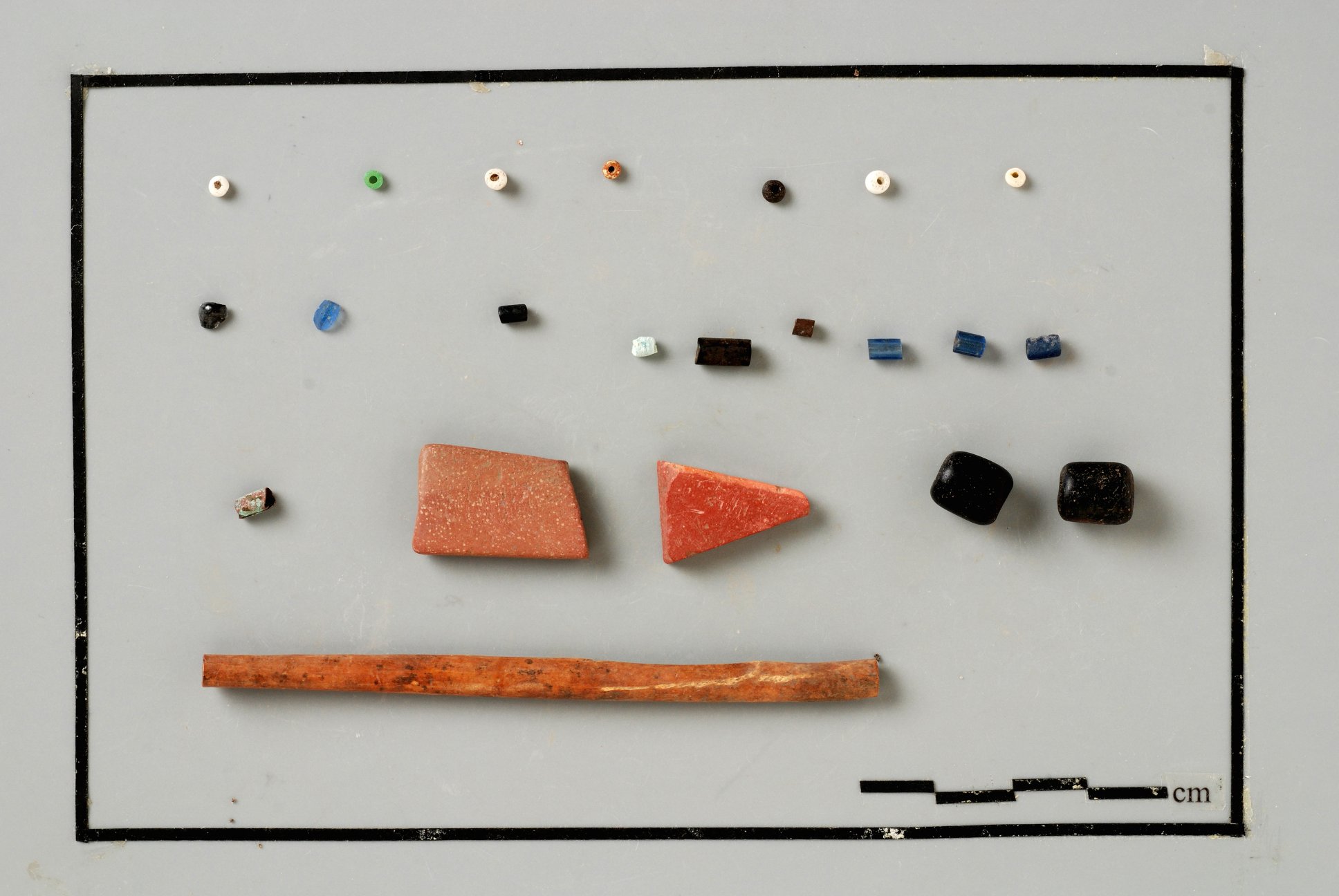
Beads, including glass and copper trade beads, catlinite beads, and a bird bone bead. The bone and catlinite beads were produced by Indigenous people.
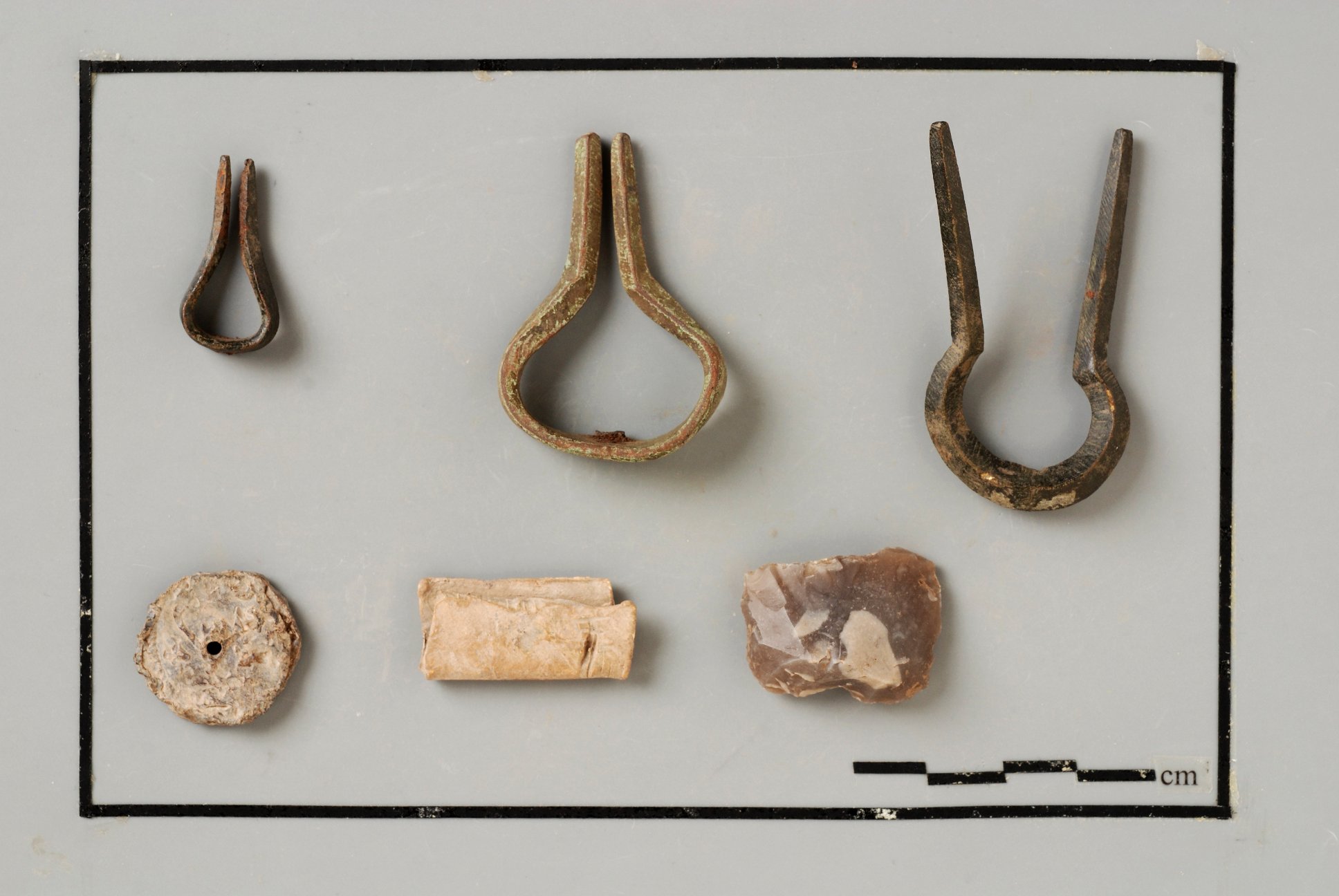
Mouth harps (top), lead seal (lower left), lead flint wrap (lower center), gun flint (lower right).